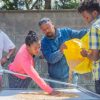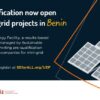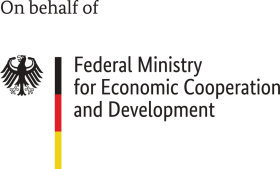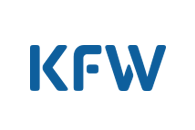Sustainable energy supply for social institutions in Zambia

Financed by the small project fund of Green People´s Energy, the Zambian Fountain Gate Crafts & Trades School and the German company Solvienta have a business model. This enables social institutions to operate PV systems economically. In an interview with Green People’s Energy, Solvienta CEO Johannes Hertlein talks about the Zambian market for renewables, explains the model and looks ahead.
You have developed a special business model for social institutions that enables them to operate their own PV systems economically. Why?
There are numerous social institutions in Zambia, many of which face the same dilemma. They spend between 20 and 30 percent of their budget on energy. An own PV system could be a cheap alternative to diesel generators. But for many institutions, the initial costs are very high, the question of maintenance is a challenge, as is the bureaucratic effort.
What are the challenges?
Because there is no local solar industry, PV systems and all components must be imported. You need a license for that, just as you need a license to build a plant. The new government wants to make these conditions easier and gives incentives. Nevertheless, the costs for PV components are still very high.
What are the reasons?
The main reason is the transport costs, because the PV components must be transported over land, as Zambia does not have a seaport. This doubles the transport costs. Another reason is that there are only a few suppliers of renewables in Zambia. There is no competitive market, so there is no willingness to sell high-quality PV components at a lower price.
How can social institutions operate their own PV systems in such an environment?
Only those institutions that already incur substantial costs for energy and save costs in the long term through the PV system can be considered. An institution that already has no financial means for energy will also have no means to operate the PV system in our business model. This is because our model does not envisage the PV system being given as a gift, but rather providing cheap access to electricity. In our considerations, the idea of maintenance was very important to us. That is why we are cooperating with the Fountain Gate Crafts & Trades School (FGCATS). It is privately organised and trains future solar workers, so it can also maintain PV systems. Another advantage is that they are allowed to import PV components as well as erect plants.
They developed the business model together with the school. How did you go about it?
We talked to many social institutions and asked them where the shoe pinches in the area of energy, what leeway they have. It was important for us to record the conditions in rural, peri-urban and urban areas. In addition, we studied the regulatory conditions. Unfortunately, companies such as social institutions are not allowed to feed electricity into the grid at all or only with extremely high administrative costs, sell it to third parties or lease PV systems. This precludes the possibility of adding value to one’s own PV system beyond its own use.
So, what does your business model look like?
FGCATS imports the PV components. These can be donated and purchased systems. The school also installs the systems at the social institutions. Ownership is immediately transferred to the social institution, and in some cases a one-time fee may be charged for the installation. The social institution does not pay for the electricity but enters a long-term maintenance contract with the school. The school refinances the purchases from this steady income. Both sides profit from this.
What are the advantages for the partners?
The social institutions can purchase a PV system through this model and have the guarantee that their system will be permanently maintained. There is no cheaper way to acquire a PV system. But the privately organized school also benefits, because it has reference projects, it earns permanent income through the maintenance contracts, and it can ensure very practical training.
But a high degree of scalability cannot be achieved with this, because the school must purchase the installed PV systems?
That is correct. How many social institutions can acquire a PV system through the school also depends on how many PV systems are donated to it. What is important to us is that we have now developed a model with which social institutions can legally operate their systems. We can build on this. We can now test the business model in practice.
What are the prerequisites for the model to spread?
The model will only be a success if we have access to cheap material. In Germany, it will soon be possible to actively repower ground-mounted solar plants even during their lifetime. The dismantled solar modules would be ideal for our project. The potential is estimated at about 36,000 MW. With less than one per mile of this capacity, we could electrify all social institutions in Zambia. Here we rely on the cooperation with the German solar industry, which could offer us access to high-quality materials at favorable conditions. If we find a German association that supports the work, companies could also donate directly to the project.
What are the next steps?
Many social institutions are contacting us. With two or three of them we want to install pilot plants, gain experience, intensify the training of local solar experts. And we have the opportunity to review this business model in the next few years and can adapt it as soon as the government revises its regulations in this direction. It would be a win-win situation if social institutions were also allowed to sell their electricity to third parties, because that would enable more of them to install their own PV systems. We also hope that associations and companies from Germany will be interested in the model. After all, this is not just a matter of distributing donations; everyone involved has the maximum interest in the sustainability of the plants. In addition, craftsmen are trained for the emerging Zambian solar market.





